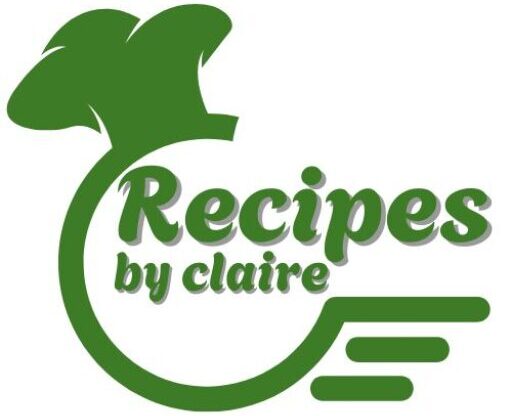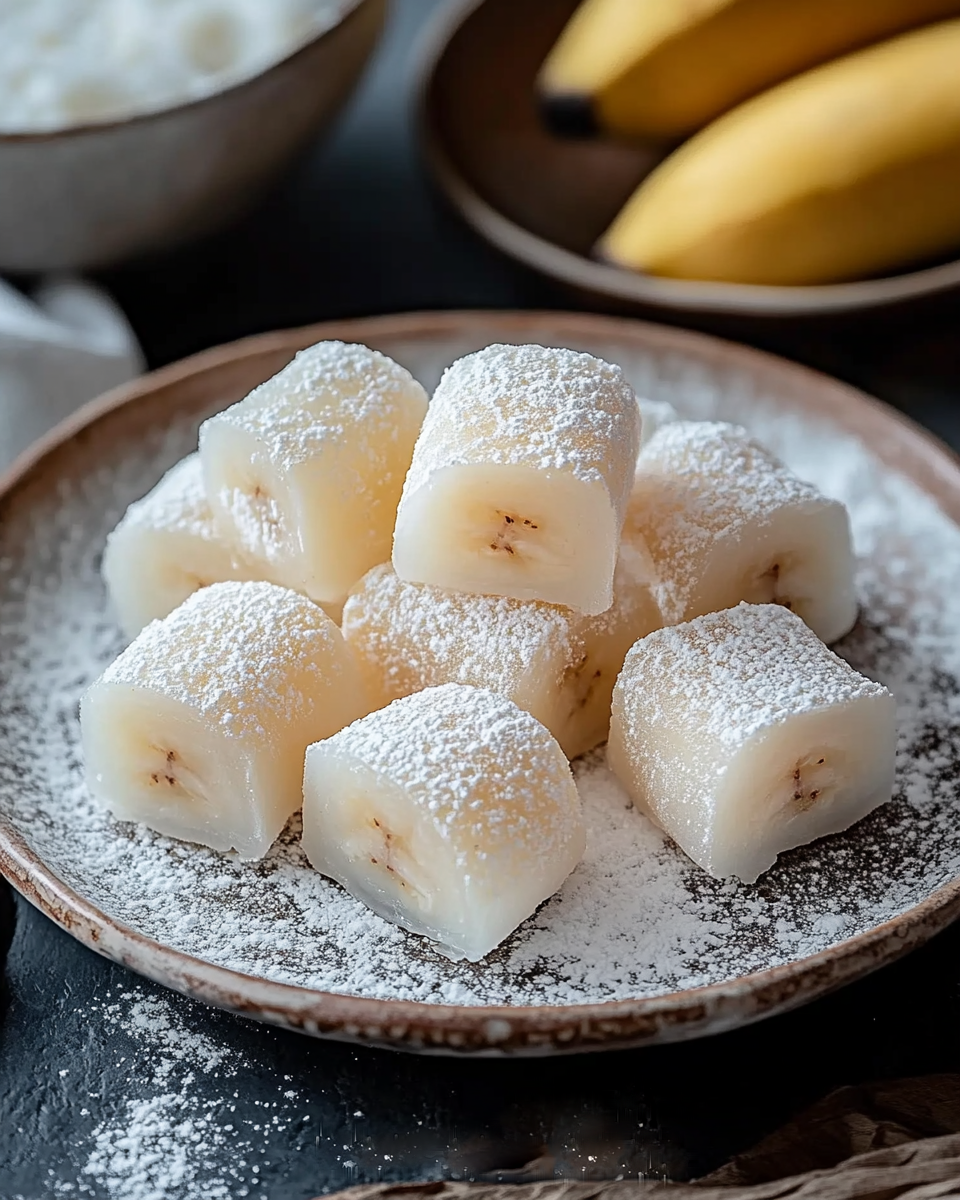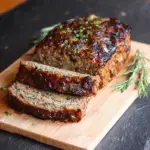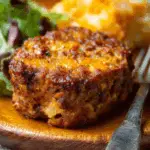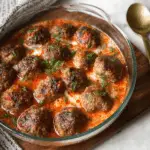These Hong Kong Banana Mochi Rolls offer a comforting bite of chewy rice flour dough infused with ripe bananas and finished with a delicate coating of coconut. Each piece is soft and slightly sweet, evoking memories of Asian street food stalls and home-style steamed desserts. Their melt-in-the-mouth texture and tropical flavor profile make them a favorite for both adults and kids alike. Perfect for tea time, afternoon snacks, or as a unique addition to a dessert buffet, these mochi rolls are a fusion of tradition and creativity. Not only are they naturally gluten-free and plant-based, but they also use minimal ingredients, making them ideal for health-conscious food lovers. Whether served warm, room temperature, or chilled, these delightful rolls will bring a touch of Hong Kong nostalgia right to your kitchen.
Full Recipe:
Ingredients:
-
3 ripe bananas
-
1 cup glutinous rice flour
-
2 tablespoons sugar
-
1/2 cup water
-
1 tablespoon vegetable oil
-
1/2 cup desiccated coconut
-
Cornstarch for dusting
Directions:
-
Peel and mash the bananas until smooth.
-
In a bowl, combine glutinous rice flour, sugar, and mashed bananas.
-
Slowly add water while stirring to form a smooth batter.
-
Lightly grease a heatproof plate or tray with oil and pour the batter in.
-
Steam the mixture for 20–25 minutes until set and translucent.
-
Let it cool slightly, then dust a surface with cornstarch.
-
Transfer the mochi onto the surface and roll it out gently.
-
Cut into strips and roll each piece with a sprinkle of coconut.
-
Serve at room temperature or lightly chilled.
Prep Time: 10 minutes | Cooking Time: 25 minutes | Total Time: 35 minutes
Kcal: 210 kcal | Servings: 6 rolls
Discover the Charm of Hong Kong Banana Mochi Rolls: A Traditional Treat with a Modern Twist
When it comes to authentic Asian desserts, few delights capture the essence of comfort, simplicity, and sweetness as perfectly as Hong Kong Banana Mochi Rolls. This humble treat is a soft, chewy rice flour roll that wraps the subtle sweetness of ripe bananas in a tender mochi layer and finishes with a fragrant dusting of shredded coconut. Rooted in traditional Chinese dessert-making techniques but adored worldwide for its gluten-free and plant-based appeal, this dish serves as a bridge between generations, cultures, and culinary preferences.
In this article, we explore the origins, cultural relevance, texture, nutritional aspects, and serving ideas of this beloved dessert without diving into the nitty-gritty of ingredients or preparation steps. Whether you’re a seasoned food blogger, a curious cook, or simply someone with a sweet tooth, understanding the deeper story behind Hong Kong Banana Mochi Rolls can elevate your appreciation and enjoyment of this unique dish.
A Brief History of Mochi in Chinese Cuisine
Although mochi is commonly associated with Japan, its roots are also deeply embedded in Chinese culinary history. Known as “nuomici” (糯米糍) in Cantonese, these chewy rice flour treats are traditionally filled with sweet red bean paste, sesame, or fruits and are popular in many southern Chinese regions, especially Hong Kong and Guangdong.
The Hong Kong variation of mochi rolls, particularly the banana-stuffed version, is a more contemporary evolution. It reflects the city’s rich fusion of traditional Chinese cooking and Western dessert trends. Bananas, once an imported luxury, became more accessible and were quickly adopted into sweet snacks and baked goods in the region. The use of bananas adds natural sweetness and softness, complementing the glutinous texture of mochi perfectly.
Texture and Taste: What Makes It Special?
The first thing that strikes you when biting into a Hong Kong Banana Mochi Roll is its texture delicate yet satisfyingly chewy. Glutinous rice flour, the main ingredient, gives the mochi its signature bounce. The banana filling provides a contrasting creaminess and rich flavor, and the outer coating of shredded coconut adds a hint of crispness and tropical aroma.
This combination of textures makes the dessert highly appealing. It doesn’t overwhelm with sweetness; instead, it gently nudges your palate with natural fruit sugars and mild coconut. Served slightly chilled or at room temperature, each bite feels like a soft, pillowy escape from the ordinary.
Why This Recipe Works for Modern Diets
In today’s world, dietary needs are more diverse than ever. People are looking for recipes that are not only delicious but also inclusive. Hong Kong Banana Mochi Rolls tick several boxes:
-
Gluten-Free: Since it’s made entirely from glutinous rice flour, this dish is safe for people with gluten sensitivities or celiac disease.
-
Plant-Based: There are no animal products involved, making it perfect for vegans and vegetarians.
-
Low-Fat and Low-Calorie: With minimal oil and no heavy creams or processed sugars, it’s a healthier option for dessert lovers.
It’s rare to find a sweet treat that caters to such a broad audience while still feeling indulgent. This balance makes the recipe an excellent addition to any modern home cook’s repertoire.
Cultural Significance and Occasions
In Hong Kong and across other Chinese communities, mochi-like desserts are often enjoyed during festivals and special occasions such as Lunar New Year, Mid-Autumn Festival, or family reunions. They symbolize unity, harmony, and sweetness in life a poetic metaphor that resonates across cultures.
Offering these rolls at gatherings brings a sense of nostalgia and comfort, especially for those who grew up with them. At the same time, they’re elegant enough to serve at modern potlucks, brunches, or even as a creative dessert in upscale fusion restaurants.
Creative Serving Ideas and Pairings
Although traditional in origin, this dish can be adapted for a variety of presentations:
-
Plated Dessert: Cut the mochi rolls into bite-sized pieces and present them on a white plate garnished with edible flowers or fruit slices.
-
Afternoon Tea: Pair them with jasmine or green tea for a harmonious and cleansing palate experience.
-
Modern Twist: Add a drizzle of melted dark chocolate or a dollop of whipped coconut cream for added decadence.
-
Bento Box Style: Include them as part of a dessert bento box along with fresh fruit, nuts, and other Asian sweets.
These flexible serving options make Hong Kong Banana Mochi Rolls as versatile as they are delicious.
How This Recipe Reflects Hong Kong’s Culinary Identity
Hong Kong is often described as the culinary melting pot of Asia. From its traditional dim sum culture to the embrace of global food trends, the city has always known how to blend old with new. The Banana Mochi Roll perfectly reflects this identity. It is simple, nostalgic, and familiar, yet capable of being refined, modernized, and personalized.
What sets Hong Kong apart in the world of food is this very ability to take traditional elements and present them in a contemporary and appealing way. Just like how egg tarts were inspired by English custard pies or how pineapple buns evolved to become a breakfast staple, mochi rolls exemplify how global and local influences blend seamlessly in this vibrant culinary landscape.
Storage Tips and Make-Ahead Advice
These mochi rolls are not only delicious when freshly made but also store well:
-
Refrigeration: Store in an airtight container in the refrigerator for up to 3 days. Dust lightly with cornstarch to prevent sticking.
-
Freezing: They can also be frozen for up to 1 month. Just thaw at room temperature for about 30 minutes before serving.
-
Texture Maintenance: Note that refrigeration can harden the mochi, so allow time for it to return to a softer consistency before eating.
These qualities make them an excellent make-ahead option for parties and gatherings.
Global Appeal: Mochi Goes Mainstream
The popularity of mochi has skyrocketed around the world in recent years. From mochi ice cream in the U.S. to mochi donuts in Japan and fusion takes in cafés across Europe and Southeast Asia, this once niche delicacy has gone global.
Banana Mochi Rolls are part of this rising trend. With their easy-to-love flavor, soft chew, and photogenic appearance, they are perfect for social media sharing and consumer appeal. Food bloggers, chefs, and dessert lovers have embraced mochi not only for its taste but also for its versatility.
Conclusion:
Hong Kong Banana Mochi Rolls are more than just a dessert they are a celebration of culture, comfort, and culinary creativity. With just a few simple ingredients, this recipe captures the soul of traditional Asian sweets while embracing the dietary preferences and aesthetic sensibilities of modern cooks.
Whether you’re introducing your family to new flavors or indulging in a nostalgic trip back to Hong Kong street markets, this dish promises warmth, satisfaction, and a chewy burst of joy in every bite.
